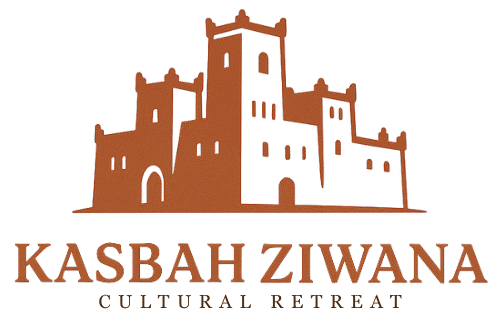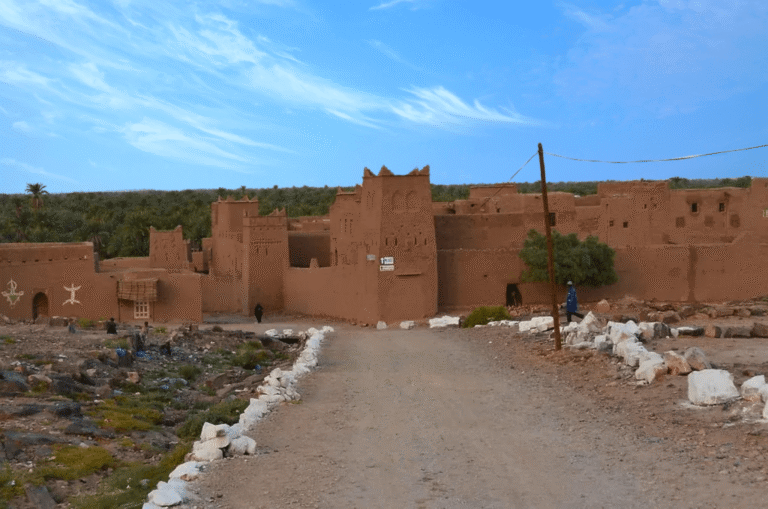Zagora: The Authentic Gateway to the Moroccan Sahara
Zagora: The Authentic Gateway to the Moroccan Sahara
Zagora is not just a pitstop on the road to the Sahara—it’s a vibrant cultural enclave, a historical crossroad, and an oasis of tradition and hospitality. Located in Morocco’s Draa Valley, Zagora offers a rich blend of desert charm, Berber heritage, and off-the-beaten-path adventures.
📍 Where Is Zagora and Why It Matters
Zagora lies in southeastern Morocco, near the edge of the Sahara Desert. It’s often seen as the last real town before entering the vast sea of dunes. Known for the iconic sign reading “Tombouctou 52 Jours,” the town pays homage to ancient trans-Saharan trade routes once navigated by camel caravans.
What makes Zagora stand out is its balance of accessibility and authenticity. Unlike Merzouga’s commercial appeal, Zagora offers a more tranquil, less-touristy Sahara experience rooted in centuries-old traditions.
🏛️ Ksar Tissergate & Museum of Arts and Traditions
One of Zagora’s most compelling attractions is Ksar Tissergate, located just 8 kilometers away. This fortified Berber village is still inhabited, offering a window into a traditional way of life preserved through time.
Inside the ksar lies the Museum of Arts and Traditions—an underappreciated gem. Housed in adobe-walled corridors, the museum showcases:
- Traditional Amazigh clothing
- Herbal medicine tools
- Berber jewelry and pottery
- Caravan gear used on desert crossings
A visit here is more than just sightseeing; it’s an immersion in Saharan culture, especially when paired with a guided tour.
🏺 Tamegroute: The Legendary Pottery Village
About 20 kilometers south lies Tamegroute, a village that has earned national fame for its green-glazed pottery.
Artisans here produce:
- Tajines
- Bowls and decorative tiles
- Oil lamps and plates
The vivid green glaze comes from a secret blend of copper-based minerals, fired in centuries-old underground kilns. Beyond pottery, Tamegroute is also home to a historic zawiya (Islamic school) and a library containing 11th-century manuscripts.
🌴 Palm Grove Walks: The Soul of Zagora
The palmeraie (palm grove) of Zagora stretches alongside the Draa River, offering a lush contrast to the surrounding desert.
Wander through the grove to experience:
- Traditional irrigation canals
- Olive and date palms
- Small agricultural plots cultivating barley, mint, and herbs
Whether by foot, bike, or donkey cart, a palm grove walk is one of the most peaceful ways to experience the daily rhythm of local life.
🐪 Desert Adventures from Zagora
Zagora is your launchpad into the Sahara Desert—less crowded than Merzouga, more intimate, and still authentically raw.
Popular options include:
- Overnight Camel Treks to Erg Chigaga or M’Hamid El Ghizlane
- 4×4 desert safaris
- Luxury desert camps with local food, music, and stargazing
- Multi-day expeditions to explore dunes, nomadic life, and prehistoric rock carvings
A typical 2-day Sahara package includes camel rides, traditional dinners under the stars, desert camp accommodation, and return transportation.
🛍️ Discover Zagora’s Souks and Markets
The souks in Zagora brim with local treasures:
- Handwoven Berber rugs
- Carved wooden utensils
- Local dates and olives
- Natural cosmetics like argan and black soap
Markets are especially vibrant on Wednesday and Sunday when locals from surrounding villages come to trade.
🏠 Where to Stay in Zagora
Zagora offers a diverse range of accommodations, from traditional kasbahs to luxury tents:
Kasbah Ziwana
A beautifully restored kasbah in Ksar Tissergate, offering authentic architecture and proximity to the Museum of Art & Traditions.
Riad Dar Zaouia
Tucked near the palm groves, this tranquil guesthouse provides home-cooked meals and a family-run atmosphere.
Luxury Desert Camps
Perfect for desert dreamers—featuring en-suite tents, candlelit dinners, and evenings with traditional music.
🌍 Local Culture and Way of Life
Zagora’s population is a mix of Amazigh (Berber), Arab, and Haratine communities. The pace of life is reflective and deeply tied to land, tradition, and faith.
Key cultural touchpoints include:
- Islamic holidays celebrated with public feasts and music
- Wedding ceremonies with drums and dancing
- Craftsmanship in pottery and textiles
Languages spoken: Arabic, Tamazight, French. English is understood in tourism settings.
🧳 Practical Travel Tips for Zagora
- Best Time to Visit: October to April
- How to Get There: Bus from Marrakech (~8 hrs), or flight to Ouarzazate + 2.5 hr drive
- Currency: Moroccan Dirham (MAD)
- Water: Drink bottled water
- Payments: Carry cash—many places don’t accept cards
- Etiquette: Dress modestly and respect local customs
🌅 Why Zagora Should Be in Your Morocco Itinerary
Zagora isn’t merely the gateway to the Sahara—it’s a destination in its own right. The town offers:
- Cultural depth without the crowds
- Hands-on experiences in pottery, agriculture, and desert life
- A welcoming community that cherishes its roots
From the dusty caravan signs to the cool shade of palm groves, Zagora stands as a living museum of Morocco’s desert soul.
Frequently Asked Questions About Zagora, Morocco
Is Zagora worth visiting?
Yes, Zagora is absolutely worth visiting—especially for travelers seeking a quieter, more authentic entry point to the Moroccan Sahara. Located in the Draa Valley, Zagora offers a rich blend of oasis life, traditional ksour (fortified villages), and access to desert adventures. Unlike busier tourist hubs, it provides peaceful palm groves, historical kasbahs, pottery villages, and a deeper cultural experience.
What can I see in Zagora?
Top attractions in and around Zagora include:
- Ksar Tissergate, a historic village with the Museum of Art & Traditions
- The green pottery workshops of Tamegroute
- Palm grove walks along the Draa River
- Camel treks and desert tours to M’Hamid and Erg Chegaga
Zagora also features weekly souks, quiet streets, and beautiful desert sunsets.
Is Zagora in the Sahara Desert or is Merzouga better?
Zagora is located at the edge of the Sahara Desert, but its terrain differs from Merzouga. While Merzouga is famous for massive dunes (ergs), Zagora offers a more rocky and flat desert landscape, with access to remote sand dunes further south near M’Hamid and Erg Chegaga. If you prefer a more peaceful and culturally immersive desert experience, Zagora is the better choice.
Is the Moroccan desert tour from Zagora worth it?
Yes. Desert tours from Zagora are less commercial and more intimate than those from Merzouga. You can enjoy:
- Camel rides through the dunes
- Stays in Berber desert camps
- Traditional music and food
- Sunset and stargazing experiences
These tours are typically 1–3 days and offer a rich, off-the-beaten-path adventure into the Sahara.
How long did it take to reach Timbuktu from Zagora?
Historically, it took 52 days by camel caravan to travel from Zagora to Timbuktu, Mali. The famous sign “Tombouctou 52 Jours” still stands in Zagora today as a cultural reminder of Morocco’s historical role in trans-Saharan trade.
Is Zagora a real desert?
Yes, but it’s different from the image of endless dunes. Zagora lies in the pre-Saharan zone, with desert plateaus, rocky plains, and access to distant sand dunes like Erg Chegaga. It’s authentic but more subtle than the golden dunes of Merzouga.




